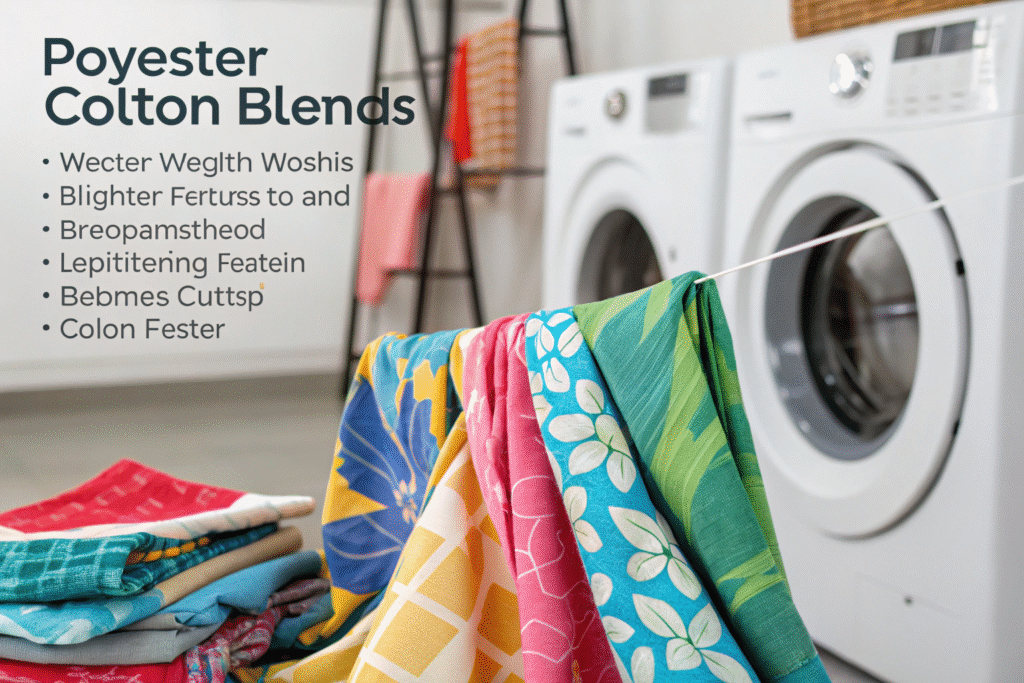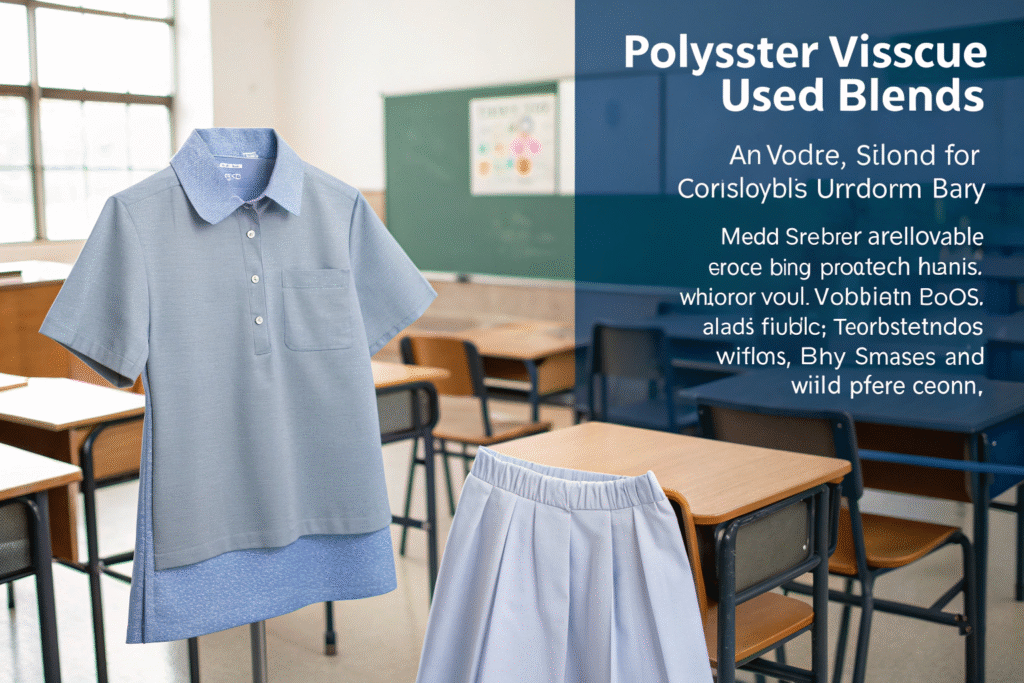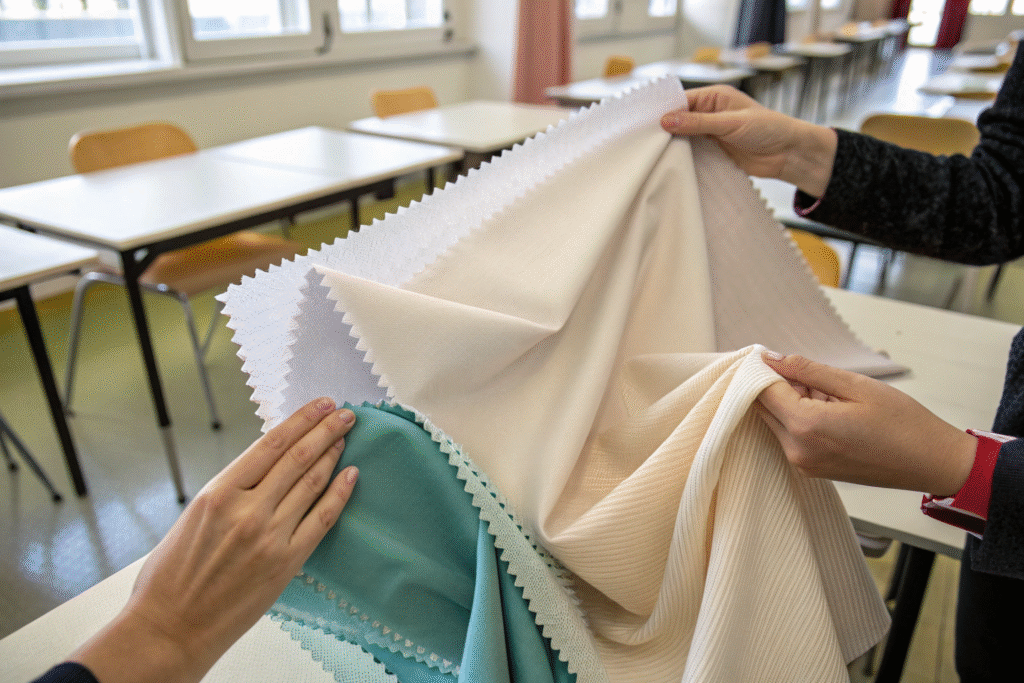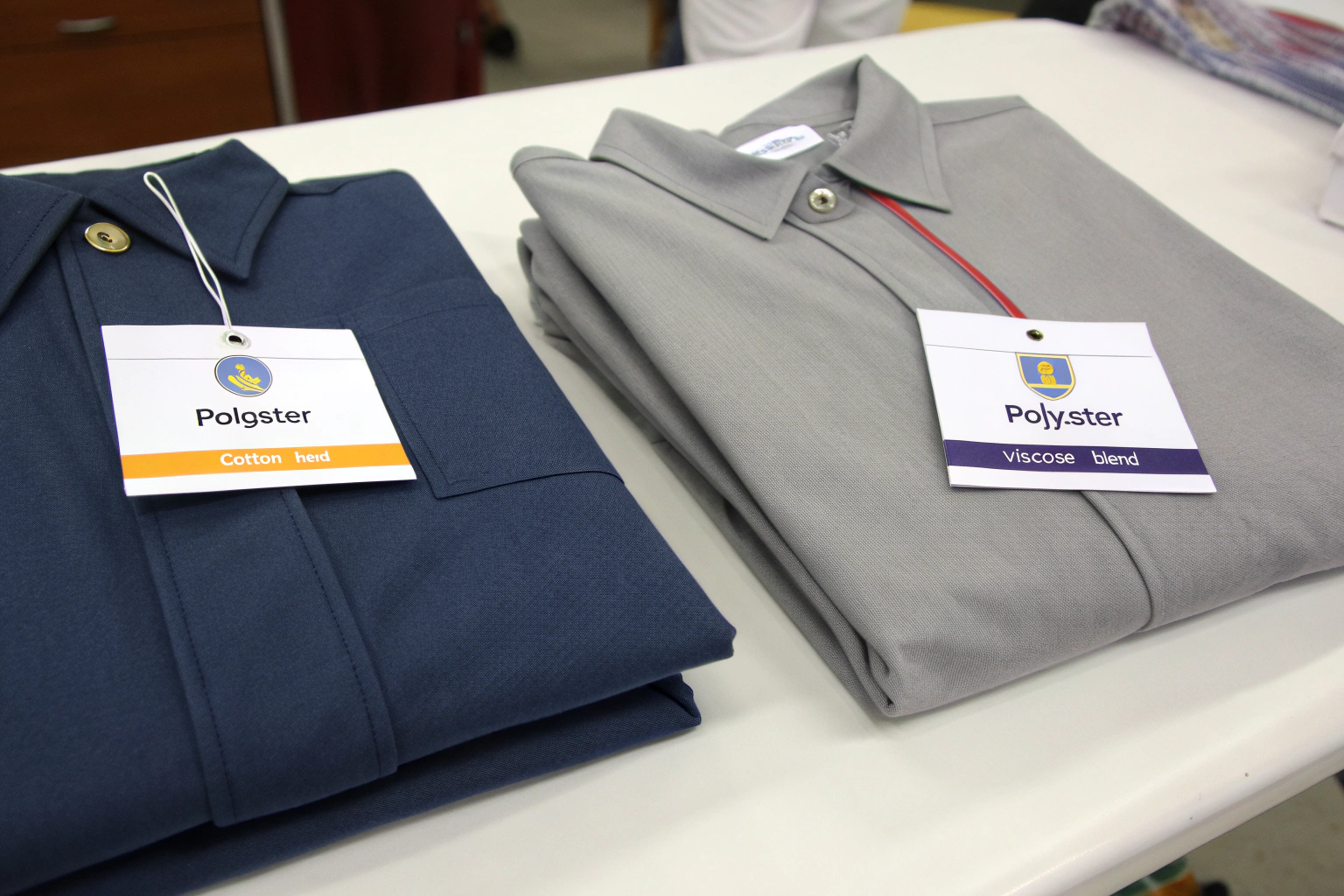As a fabric manufacturer with over 20 years in the industry, I've seen the school uniform debate firsthand. Parents, schools, and distributors often ask me the same question: which fabric truly stands up to the daily wear and tear of active students? The choice usually comes down to two popular blends: polyester viscose and polyester cotton. Each offers a unique set of benefits, but the "best" one depends on what you value most for the children who will be wearing them every day.
The best fabric for school uniforms depends on your priorities: durability and easy care favor polyester cotton, while comfort and a more natural feel point towards polyester viscose. Both blends are cost-effective and widely used, but they perform differently in terms of breathability, wrinkle resistance, and long-term appearance. Understanding these key differences is crucial for making an informed purchasing decision that balances comfort, maintenance, and budget for your specific needs.
Let's break down the pros and cons of each fabric blend to help you decide. We will explore their durability, comfort, care requirements, and cost-effectiveness so you can choose the perfect uniform fabric for your students.
What are the key differences in durability?
School uniforms need to be tough. They face daily abrasion from backpacks, playground activities, and frequent washing. Durability is often the first concern for buyers.
Polyester cotton blends are renowned for their strength. The synthetic polyester fibers provide excellent resistance to stretching and shrinking, while the natural cotton adds tear strength. This combination results in a fabric that can easily withstand over 100 industrial washes, making it a long-lasting choice. Furthermore, polyester cotton has high colorfastness, meaning the colors and prints stay vibrant wash after wash, which is essential for maintaining a school's brand image over many years.

How does fiber composition affect fabric strength?
The strength of a fabric comes from its fiber composition. In a typical 65/35 polyester-cotton blend, the polyester provides the core tensile strength and abrasion resistance. This is why uniforms made from this blend don't thin out at the knees or elbows easily. The cotton component, while not as strong as polyester under tension, contributes to the fabric's overall durability by adding mass and improving comfort. For even heavier-duty needs, some manufacturers offer a 50/50 blend, which increases the soft cotton feel while still maintaining significant durability from the polyester content.
What about pilling and abrasion resistance?
Abrasion resistance is a critical factor for school uniforms. Polyester cotton excels here because the synthetic fibers are less likely to break and form pills on the surface of the fabric compared to more natural fibers. We test our fabrics using the Martindale rub test, a standard method for assessing abrasion resistance. High-quality polyester cotton uniforms can often withstand thousands of rubs before showing significant wear. This translates directly to a uniform that looks newer for longer, even with the constant friction from desks, chairs, and backpacks that students experience daily.
Which blend offers better comfort and wearability?
Comfort is king when a child has to wear a uniform for six to eight hours a day. The fabric's feel against the skin and its ability to manage body temperature are crucial for keeping students focused and happy.
Polyester viscose blends are often the winner in the comfort category. Viscose, a semi-synthetic fiber made from cellulose, is highly breathable and has a beautiful, soft drape that feels more like cotton than polyester. It is excellent for moisture absorption, pulling sweat away from the skin to keep students dry and comfortable during warm days or in heated classrooms. While not as breathable as pure cotton, it offers a significant comfort advantage over a standard polyester-cotton blend, making it ideal for dressier uniform items like blouses and shirts.

How does breathability impact a student's day?
Breathability refers to a fabric's ability to allow air to circulate and moisture vapor to escape. A non-breathable uniform can make a student feel sticky, clammy, and distracted. Polyester viscose is more breathable than polyester cotton because the viscose fibers can absorb more moisture. This helps regulate body temperature throughout the school day, from a cool morning playground session to a warm afternoon in a packed classroom. For schools in warmer climates, this enhanced breathability can be a major factor in student comfort and well-being.
Is one fabric softer than the other?
The softness and drape of a fabric greatly affect wearability. Polyester viscose is typically softer and has a silkier, more fluid drape than polyester cotton. It feels less "stiff" and moves more freely with the body, which is appreciated by active children. While polyester cotton can be softened through manufacturing techniques and washes, it generally has a stiffer hand-feel initially. However, it's worth noting that for items like structured blazers or trousers, the stiffer drape of polyester cotton can be desirable to maintain a sharp, neat appearance.
How do care and maintenance requirements compare?
Ease of care is a major selling point for school uniform fabrics. Busy parents need uniforms that are low-maintenance, quick to dry, and look presentable with minimal ironing.
Polyester cotton is the champion of easy care. Its high polyester content makes it highly wrinkle-resistant, so uniforms often come out of the dryer ready to wear, requiring little to no ironing. It also dries much faster than fabrics with high viscose or cotton content, which is a lifesaver for last-minute laundry. While polyester viscose is also machine washable, it is more prone to wrinkling and may require ironing to achieve a crisp look. It can also be susceptible to shrinkage if not washed carefully, whereas polyester cotton is generally more dimensionally stable.

Which fabric is more wrinkle-resistant?
Wrinkle resistance is where polyester cotton has a clear advantage. The resilient nature of polyester fibers means they spring back to their original shape after being crumpled. A polyester cotton uniform can be folded in a backpack all day and still look reasonably neat. Polyester viscose, with its more fluid drape, is more likely to hold creases and wrinkles. For a consistently sharp appearance without daily ironing, polyester cotton is the more practical choice. This durability against wrinkling is a key reason it's the go-to fabric for corporate workwear as well, where a professional appearance is mandatory.
What are the best washing and drying practices?
Proper care extends the life of any uniform. For polyester cotton, washing in warm water and tumble drying on a low setting is usually safe and effective. For polyester viscose, we recommend a gentler cycle in cold water to prevent shrinkage and preserve the soft hand-feel. It's best to avoid high-heat drying for viscose blends; air drying or a low tumble dry is preferable. Always check the care label instructions provided by the manufacturer, as finishes and exact blend ratios can affect the optimal cleaning method.
Which fabric provides the best value for money?
Budget is always a consideration, especially for families who need to purchase multiple sets. The best value fabric balances initial cost with longevity and performance over time.
Polyester cotton typically offers the lowest cost per unit, making it an economical choice for schools and parents on a tight budget. Its exceptional durability means the uniform will last longer, potentially being passed down to younger siblings, which increases its overall value. Polyester viscose is often slightly more expensive due to the additional processing required to create viscose rayon. While it offers superior comfort, its lifespan may be shorter if not cared for properly, impacting its long-term value proposition.
| Feature | Polyester Cotton | Polyester Viscose |
|---|---|---|
| Initial Cost | Lower | Slightly Higher |
| Durability | Very High | Good |
| Lifespan | Longer | Slightly Shorter |
| Cost-Per-Wear | Excellent | Good |

How does fabric choice impact the total cost of ownership?
The true cost of a uniform isn't just the price tag. It includes how often you need to replace it. A more durable polyester cotton uniform might survive two school years, while a softer polyester viscose one might show wear after one. This makes the cost-per-wear of polyester cotton often lower. Additionally, the easy-care nature of polyester cotton saves on energy bills (faster drying times) and the potential cost of professional laundering or ironing. When calculating budget, schools and parents should consider this long-term value, not just the initial purchase price.
Are there cost-effective sourcing options from China?
Yes, sourcing high-quality uniform fabrics from China can be very cost-effective without sacrificing quality. As a manufacturer based in Keqiao, the heart of China's textile district, we leverage large-scale production and an integrated supply chain to keep costs competitive. We offer both blends in various ratios (e.g., 65/35, 50/50) to meet different budget and performance needs. Our end-to-end control from weaving to finishing ensures consistent quality, and our direct-to-buyer model cuts out middlemen, passing the savings on to you. We also provide small-batch customization, allowing you to test the market without a huge initial investment.
Conclusion
Choosing between polyester viscose and polyester cotton for school uniforms isn't about finding a single "best" fabric, but rather the right fabric for your specific needs. If your top priorities are maximum durability, easy care, and the lowest long-term cost, then polyester cotton is the reliable workhorse you can count on. If you value superior softness, enhanced breathability, and a more premium, natural drape, then polyester viscose is an excellent comfort-focused choice. Both blends are proven performers in the schoolwear sector, and your decision should ultimately balance the demands of daily wear with the comfort of the students.
We understand that making the right choice is crucial for your business, whether you're a distributor, a school administrator, or a brand. At Fumao Textiles, we have over two decades of experience weaving, dyeing, and finishing both these fabric blends to the highest standards. We can guide you on the perfect blend ratio, weight, and finish for your uniform program. Let's discuss your project and create samples for you to feel and test. For a direct conversation about your sourcing needs, please reach out to our Business Director, Elaine. She will ensure you get the quality and service your orders deserve.
Contact our Business Director, Elaine, today at elaine@fumaoclothing.com to discuss your school uniform fabric requirements.










